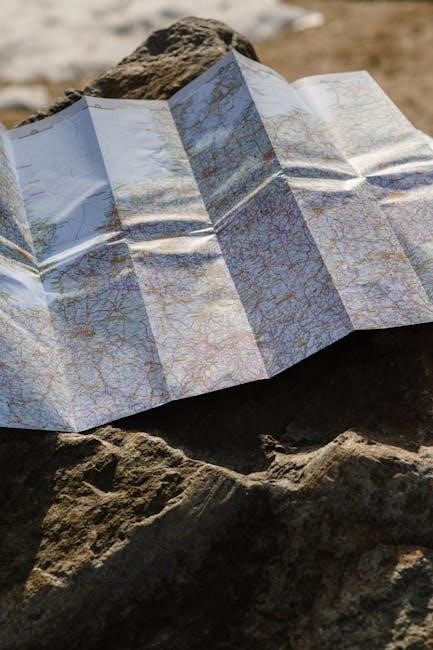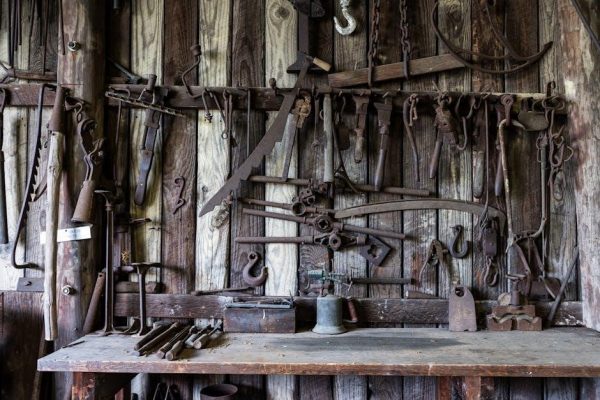Sharpening Stone Angle Guide: A Comprehensive Overview
Sharpening stone angle guides are essential tools designed to help users maintain a consistent angle while sharpening knives. They eliminate guesswork‚ ensuring a precise edge.
Sharpening stone angle guides are invaluable tools for achieving and maintaining the correct angle when sharpening knives. These guides are designed to assist both beginners and experienced users in consistently sharpening their blades. These innovative guides are designed to optimize the sharpening process‚ ensuring that your knives achieve the perfect angle for optimal sharpness. By clipping onto the spine of the knife‚ they provide a stable reference point.
Understanding the Importance of Sharpening Angle
Maintaining the correct sharpening angle is essential for optimal knife performance. The angle directly impacts the sharpness‚ edge retention‚ and overall cutting ability of the blade‚ so it is essential.
Impact of Angle on Edge Retention and Cutting Performance
The sharpening angle dramatically influences a knife’s edge retention and cutting performance. A shallower angle creates a sharper edge but is more delicate and prone to damage‚ reducing edge retention. Conversely‚ a steeper angle results in a more durable edge that can withstand heavy use but may not be as sharp. Selecting the optimal angle balances sharpness and durability‚ tailoring the knife’s performance to its intended use.
Types of Sharpening Angle Guides
Various sharpening angle guides exist‚ including clip-on‚ magnetic‚ and attachments for belt sanders. Each type offers unique features to assist in maintaining a consistent angle during the sharpening process.
Clip-On Guides: Advantages and Disadvantages
Clip-on angle guides offer simplicity and ease of use‚ attaching directly to the knife’s spine. They are advantageous for beginners‚ promoting consistent sharpening angles. However‚ some disadvantages include potential limitations on blade widths. Certain models might slip during sharpening‚ and the plastic may damage the blade. Ensuring compatibility and secure attachment is crucial for effective use and preventing scratches.
Magnetic Angle Guides: Features and Benefits
Magnetic angle guides utilize magnets to securely attach to the knife blade‚ offering stability during sharpening. This design minimizes slippage‚ resulting in more consistent angles. A key benefit is the ability to quickly switch between different angles‚ accommodating various knife types. The strong magnetic hold also enhances safety‚ reducing the risk of accidents. Magnetic guides are suitable for most blades.
Angle Guide Attachments for Belt Sanders
Angle guide attachments for belt sanders are designed to facilitate precise and consistent sharpening. These attachments offer a stable platform‚ ensuring the knife is held at the correct angle against the belt. This enhances safety and control‚ particularly useful for achieving professional-grade edges quickly. They often feature adjustable settings to accommodate various blade types and desired angles. The easy installation allows users to sharpen knives effectively.

Selecting the Correct Sharpening Angle
Selecting the correct sharpening angle is critical for optimal knife performance. The ideal angle depends on the knife type and intended use. A precise angle ensures sharpness and durability.
Recommended Angles for Different Knife Types (Japanese vs. Western)
Japanese knives often require a sharper angle‚ typically between 15 and 17 degrees‚ due to their harder steel. This finer angle creates an exceptionally sharp edge‚ ideal for delicate tasks. Western knives‚ with softer steel‚ usually benefit from a slightly wider angle‚ around 20 degrees‚ offering a balance between sharpness and durability. Consider the knife’s steel and usage when selecting the appropriate angle.
Using Angle Finders and Protractors
Angle finders and protractors are valuable tools for accurately determining the existing angle of a knife blade or setting a specific sharpening angle. These tools ensure precision by providing a visual reference. An angle finder can help match the original angle during sharpening‚ while a protractor aids in setting the angle on adjustable guides. Consistent use of these instruments enhances the accuracy and consistency of your knife sharpening process.
How to Use a Sharpening Stone Angle Guide
Using a sharpening stone angle guide involves attaching the guide to the knife blade and maintaining consistent contact with the stone. This ensures a precise and uniform sharpening angle throughout the process.
Attaching the Guide to the Knife
Attaching the angle guide to the knife is a crucial first step. Most guides clip onto the spine of the blade‚ ensuring proper alignment. The guide should securely grip the blade without damaging it. Some guides use soft plastic or ceramic covers to protect the blade’s surface. Ensure the guide is positioned correctly to achieve the desired sharpening angle‚ typically between 15 and 20 degrees‚ depending on the knife type. Proper attachment is essential for consistent results.
Maintaining a Consistent Angle During Sharpening
Maintaining a consistent angle is key to achieving a sharp and even edge. With the angle guide attached‚ focus on keeping the guide flush against the sharpening stone throughout each stroke. Apply even pressure and avoid rocking the knife. The guide should glide smoothly‚ maintaining the pre-set angle. This technique ensures that the entire blade edge is sharpened uniformly‚ leading to optimal cutting performance and edge retention. Consistency is paramount for professional-quality results.
Materials and Construction of Angle Guides
Angle guides are commonly made from steel‚ plastic‚ or ceramic materials. The choice of material impacts durability‚ glide‚ and potential for damaging the stone or blade during the sharpening process.
Steel vs. Plastic vs. Ceramic
Steel angle guides offer durability but can scratch stones if not properly finished. Plastic guides are gentler but may lack the rigidity of steel. Ceramic guides provide a smooth‚ non-abrasive surface ideal for delicate stones. The optimal choice depends on balancing durability‚ stone protection‚ and budget. Consider how each material interacts with your sharpening stones and knives to make an informed decision that suits your sharpening needs.
Durability and Longevity Considerations
When selecting a sharpening stone angle guide‚ durability is paramount. Steel offers superior longevity‚ resisting wear and tear from frequent use. Plastic guides‚ while affordable‚ may crack or degrade over time. Ceramic guides are brittle‚ prone to chipping if mishandled. Evaluate material strength‚ construction quality‚ and expected usage frequency. Investing in a robust guide ensures consistent performance and avoids the need for frequent replacements‚ ultimately saving time and money in the long run.
Benefits of Using a Sharpening Stone Angle Guide
Using a sharpening stone angle guide ensures consistent and precise edges on knives. It simplifies the sharpening process‚ especially for beginners‚ leading to enhanced cutting performance and safety.
Achieving Consistent and Precise Edges
Sharpening stone angle guides are instrumental in achieving consistent and precise edges. By maintaining a constant angle‚ these guides prevent the rounding or unevenness that can occur with freehand sharpening. This results in a more uniform bevel‚ optimizing the knife’s cutting ability and edge retention. Consistent sharpening also prolongs the life of the blade‚ reducing the need for frequent and aggressive sharpening sessions‚ ultimately saving time and effort while ensuring peak performance. The precise edges achieved enhance both safety and efficiency in cutting tasks.
Making Sharpening Easier for Beginners
Sharpening stone angle guides greatly simplify the sharpening process for beginners. These guides remove the guesswork involved in maintaining the correct angle‚ a common challenge for novices. By providing a stable reference point‚ they allow beginners to focus on consistent movement and pressure. This fosters confidence and reduces the likelihood of damaging the blade. With an angle guide‚ beginners can achieve professional-quality results more quickly‚ developing essential sharpening skills without the steep learning curve typically associated with freehand techniques‚ making knife maintenance accessible and less intimidating;
Troubleshooting Common Issues
Common issues include the guide slipping‚ moving‚ or being incompatible with blade widths. Addressing these problems ensures effective sharpening. Proper setup and selecting compatible guides are key for best results.
Guide Slipping or Moving During Sharpening
One common problem when using sharpening angle guides is slippage or movement during the sharpening process. This can lead to inconsistent angles and uneven edges. Ensure the guide is securely attached to the blade before you start sharpening; Applying consistent‚ gentle pressure can prevent movement. Using a non-slip mat under the sharpening stone can also improve stability. Check the guide periodically and readjust as needed to maintain the correct angle throughout sharpening.
Incompatible Blade Widths
Another issue arises when the blade width is incompatible with the sharpening angle guide. Some guides are designed for specific blade widths‚ and using them with blades that are too narrow or wide can compromise their effectiveness. Measure the blade width and select a guide accordingly. For blades outside the guide’s range‚ consider using alternative sharpening methods or adjustable guides that accommodate a broader range of blade sizes.
Alternative Sharpening Methods
Besides using sharpening stones with angle guides‚ other methods exist‚ including electric sharpeners and honing steels. Each method offers different levels of precision and control‚ catering to various skill levels and knife types.
Guided Sharpening Systems vs. Freehand Sharpening
Guided sharpening systems‚ often utilizing jigs and precise angle settings‚ offer consistency and are ideal for beginners. They ensure a uniform bevel along the blade’s edge. Freehand sharpening‚ conversely‚ demands considerable skill and practice‚ allowing for subtle adjustments and a more personalized edge. While freehand offers greater control to experienced users‚ guided systems provide reliability and repeatability‚ minimizing errors and wasted time. Guided systems can include angle guides used with stones.
Maintenance and Care of Sharpening Stone Angle Guides
Proper maintenance of sharpening stone angle guides ensures their longevity and accuracy. After each use‚ clean the guide to remove any metal filings or abrasive residue. For steel guides‚ a light oil coating can prevent rust. Plastic or ceramic guides can be cleaned with mild soap and water. Regularly inspect the guide for any signs of wear or damage‚ such as cracks or warping‚ that may affect its performance. Store the guide in a dry place to prevent corrosion or degradation.





